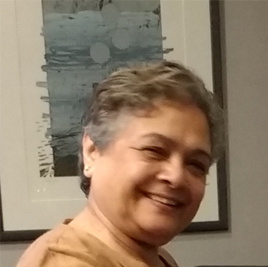One winter afternoon seventeen of us, gently greying women journalists met on a lawn on the Parliament Street, flanked by buildings housing male power in various fields. The year was 1995 and the subject we wished to discuss was the creation of an exclusive press club for women journalists working in all Indian languages. Delhi is a city where the molding, direction and expression of political power organizes each discussion and its discussants into two groups : feminine and masculine; men and women. This division underlies and reinforces the totality of India’s power discourse. And we were getting rather tired of every now and then being treated as co-consumers of the surplus news the men in the profession extracted from the power arena. We wanted a watering hole of our own, where we could meet over cups of tea or coffee ( alcohol would require a bar license which we could not afford), and let our hair down, swap professional information, tips for the younger ones and sometimes just professional gossip.
As senior journalists it was obvious to us by now, that equality required a genuine change without necessarily assuming a bitterly confrontationist stance. We told our male colleagues at the Press Club that we would continue to be members of the club but our needs and numbers needed a genuine change and a new relation between our lives and journalism. As a compassionate female judge, Justice Claire L’Heureux Dube’ of Canada once said equality is not about equal treatment or some mathematical equation waiting to be solved. It is about human dignity and a full membership in a group. It is about promoting an equal sense of self-worth. To their credit they understood and chased the issue no more. As a matter of fact many of them helped us generously during the initial years when we were short of funds and had only a temporary on the premises the government had made available to us at 5, Janpath.
We have come a long way since then. Most of the founder members, myself included, have retired from our jobs and are writing or commenting on important issues on TV in a part time capacity. Men’s superior strength no longer confines them to being beasts of burden. Some male editors are now unself consciously happily cooking, painting or commenting on music. And women are heading news portals, thanks to the digital revolution, often partly from home and reporting from troubled zones leaving behind families and husbands and children. The media fraternity in metro towns at least, is accepting slowly that women also labor, men also reproduce.
Some things have yet to change. The Me Too movement and its back lash in form of male predators slapping defamation cases against women who blew the whistle, revealed how within the media women’s so called power could often be the other side of female powerlessness. That in a profession where males mostly held the top jobs, a woman’s supposed power to deny sexual advances at work place is actually the underside of her actual lack of power to stop it. The analysis that it has led to since within the IWPC and outside at work places, and the awareness building about legalities that would help women in such positions, has helped young women journalists.
Looking back at the female and male halves of our journalism meet and clash and reconcile and gather more strength from each other, transforms many things. By exposing and correcting the secular democratic values underlying nationalism and justice as visualised by our Constitution makers, the female journalists are causing new earthquakes frequently. Good for them. They thus challenge and rearrange every part of the intellectual landscape that some others seek to subvert. Personally it is a great source of joy to see such talent enrich Indian journalism. Our unique club that has been a great source of strength for so many of us now complete 25 years of its existence, more power to its proverbial elbow .
In the Beginning was the Word

